Some images taken by Galih Naga Seno, which appear on his facebook page. With thanks to Galih.
|
Here are a couple of photos from the book launch itself which took place in the pendpopo area outside the gallery and inside the gallery as well, where each of us read a sentence or two from our chapter.
It was a very moving evening with many of Prapto's old friends in attendance, some telling their stories of encounters with Prapto in the distant past. The evening started with a fantastic performance from Prapto's son, Galih's African drumming group, followed by a welcome and opening of the book launch by Prapto's daughter, Melati. We editors presented a case bound version of the book to Prapto, with the color pictures, which are really beautiful if you haven't seen it yet. Thanks to the contributors for your writing, of course, and for the many messages of support we received leading up to the launch. I feel the strength and beauty of our network on this last evening in Solo. ........................................Posted by Katya Bloom ........................................Posted by Margit Galanter
Permaculture (PC) is a theme that has threaded its way through our talking and practising during the Workshop for Writers. At the start of our very first session, by the beach in Tejakula, Prapto asks me to talk to the group about PC. I explain that the first design principle is to observe and interact, and how I see the practice of Amerta movement as uniquely helpful in complying with PC teacher Warren Brush's suggestion that PC practitioners must learn to align their movement with nature. Some days later, Prapto contrasts digging (analysis) with tuning (process), later on commenting: "Tuning not adaptation - has sense of creating something". This idea of tuning would be immediately recognisable to PC designers, who will spend as long as it takes to understand the landscape and the needs of its inhabitants before considering any significant changes.
In his introductory comments for a public discussion on body architecture, on the second day of the series of events linked to the book-launch, Prapto describes PC in terms of healthy bodies, healthy environment and healthy economy. One of the discussants, Ibed Surgana Yuga, mentions at one point the body in dialogue with the architecture of nature. I related these comments back to a challenge Prapto previously set me, to think about the place of art in PC. Thinking about the dimension of aesthetics for us as architects of living systems, I wondered whether we should be thinking of PC primarily as a design science, the skilful application of established principles to achieve a desired technical outcome, or more about the skilful placement and combination of elements in the landscape as an act of artistry. To what extent should our design choices be swayed by aesthetic considerations when a healthy, self-sustaining ecosystem is going to be beautiful anyway? When Prapto reminisced about giving a workshop in Santa Barbara, California in 2011, he said that was when he learnt about PC, and understood that human design could take inspiration from natural systems in ways that would meet human needs without destroying the ecosystems that we ultimately depend on. When we are contemplating changes to our living arrangements, taking the time to move freely in full receptivity to the information in the landscape of our lives and our environment, we can be sensitive to all the needs that need to be met - practical and aesthetic. Amerta and Permaculture - a natural fit. ........................................Posted by Hugh Kelly Inhabiting the Gallery space at Bentara Budaya, in front of the largest bookshop in Solo.
This room will gradually become the exhibition space for Prapto’s Wayang Buddha retrospective as well as the space for the book launch and workshops. In the room next door Stephen, Isabel and Katie Lee are starting to hang the Timeline photos . Strange suddenly to be in the city - a different kind of stage. And here we are moving together in communication to adapt and to tune to ourselves, to each other and to our new surroundings. Several people played the piano to support the movers. And we had lunch together in – rice and veg and chicken in banana leaves – discussing and preparing for the five days. Sally practising for her performance in a wonderful costume, as others come and go with hammers, ladders, cups of tea , mobile phones and we create a programme on a computer for printing out tomorrow. Too late for a swim ( already dark) – we call for a taxi home to Mojosongo. We pass a new restaurant called The Lazy Cow… and now to bed. Slowly-slowly........................................Posted by Sandra Reeve Goa Gajah Temple, Bedulu, Bali
She watched us from high above, having been sent by her mother (who tended the Temple grounds and ran the fresh coconut stall) to fill a bottle at the stream of holy water near where our group was practicing. It was our final session at Goa Gajah and the theme was practicing as audience. The pace was very measured. As she entered the space I think she felt a kinship with the atmosphere in which people spoke with their movement. Maybe a childlike sense of curiosity or wonder or play. She wandered among us, listened to individual movers and sometimes expressing herself -- she waved her washcloth in the air, and hung by her arms from a tree branch. This place was her natural habitat, and she understood the practice of audience. In the photo she is playing at being invisible right behind Prapto. Shortly afterward she started singing quietly to herself while he spoke to the group. ........................................Posted by Katya Bloom Here we are in Bali at the beginning of our prolonged book launch! These photos were taken when the editors presented Prapto with the book. Our intention is to share our time here with you through this blog.
........................................Posted by Sandra Reeve |

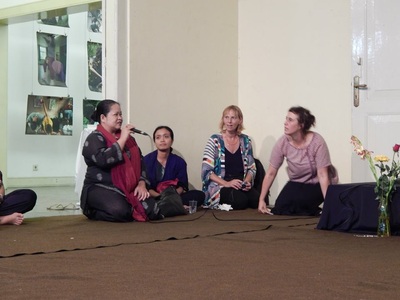

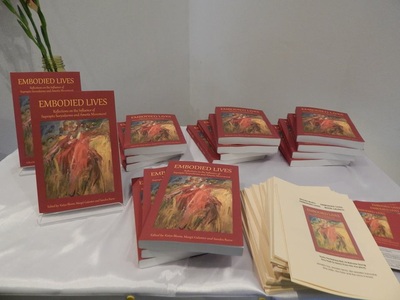
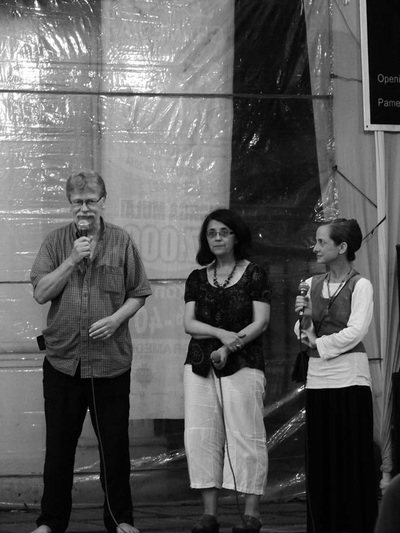
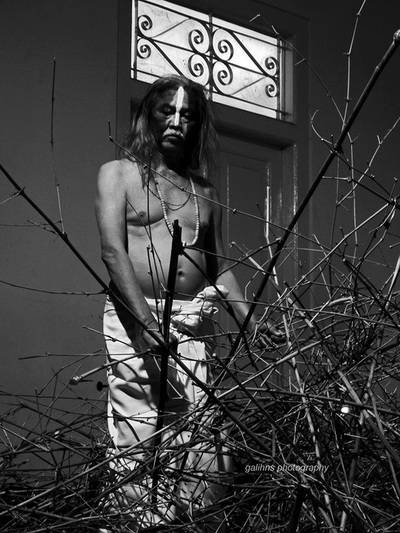
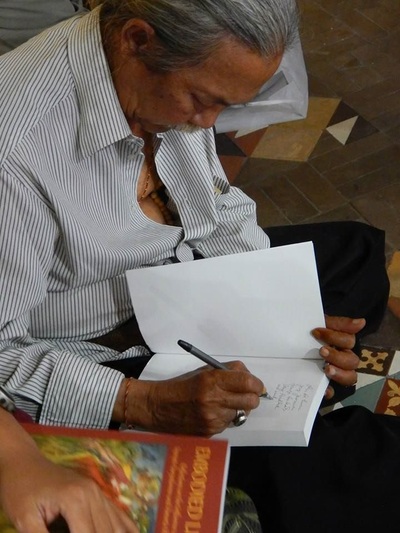
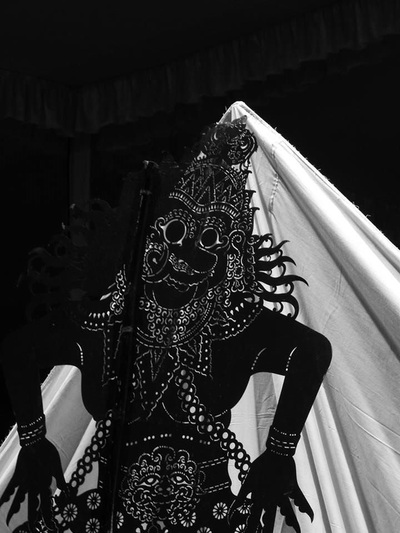




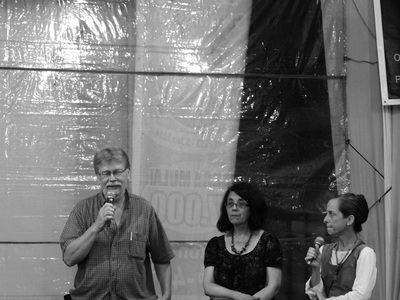
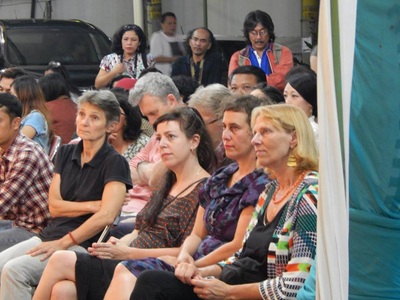
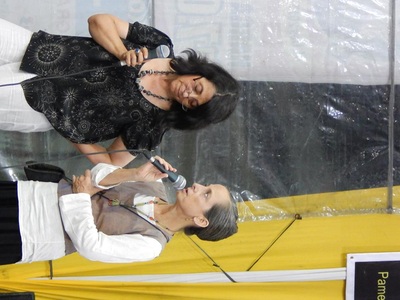
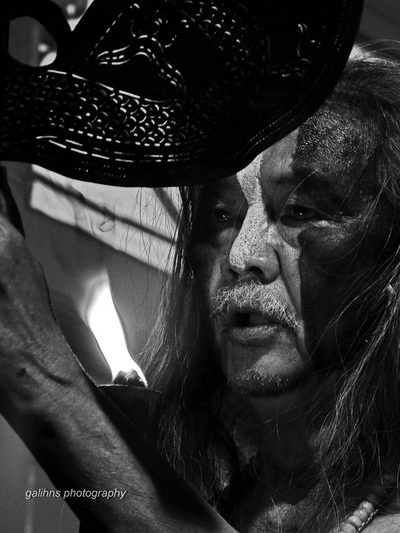
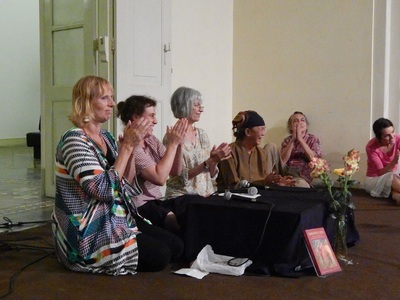
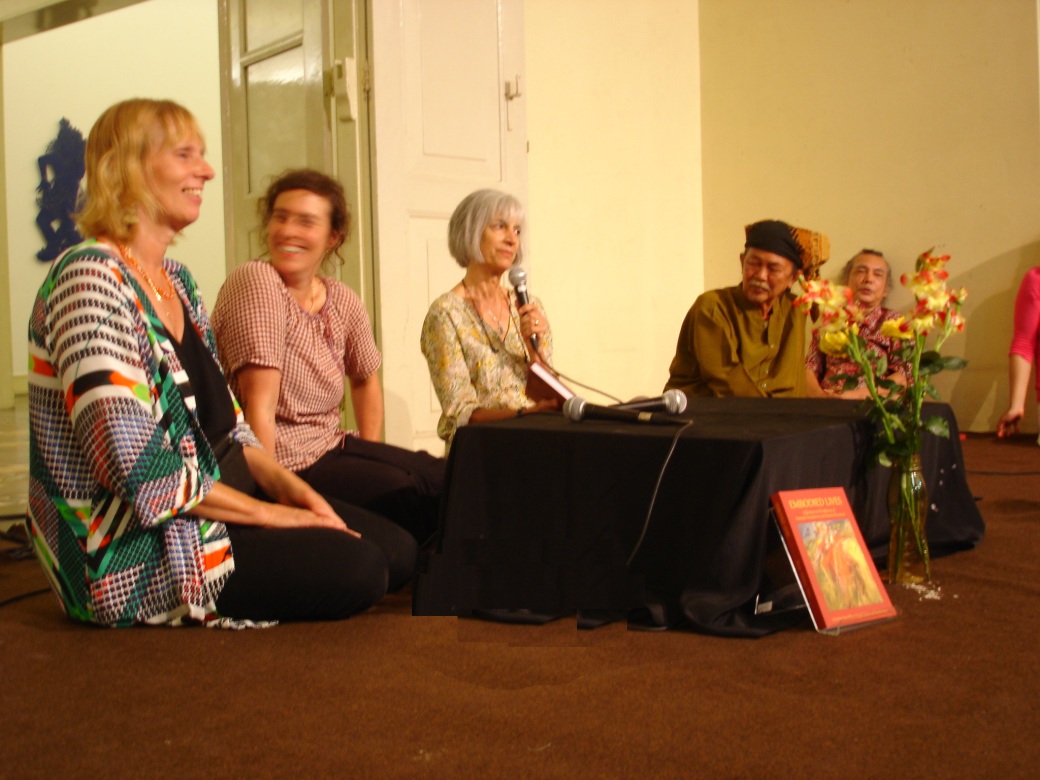
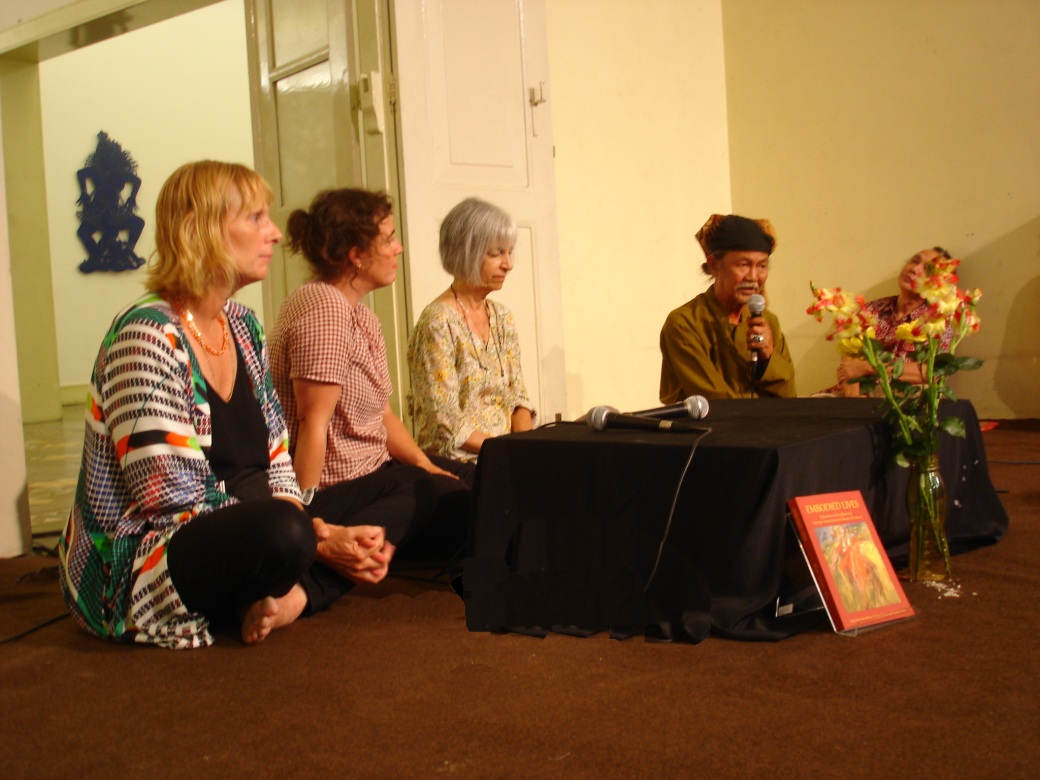









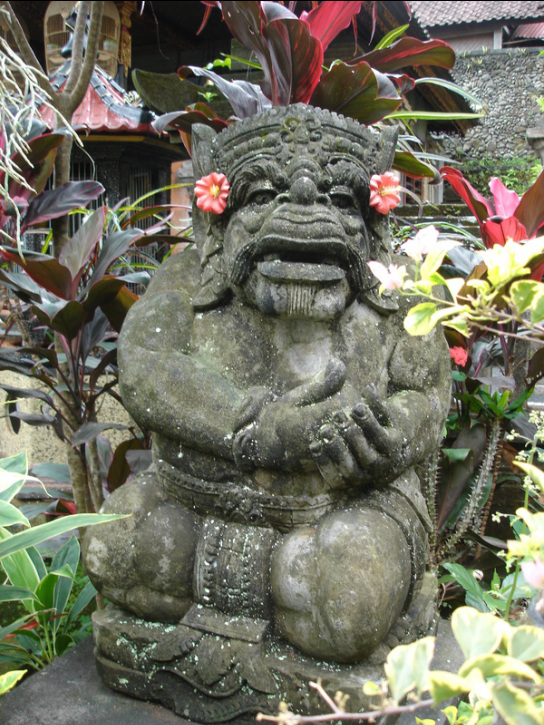
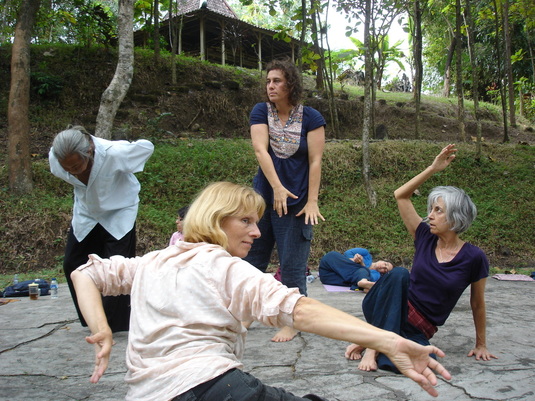

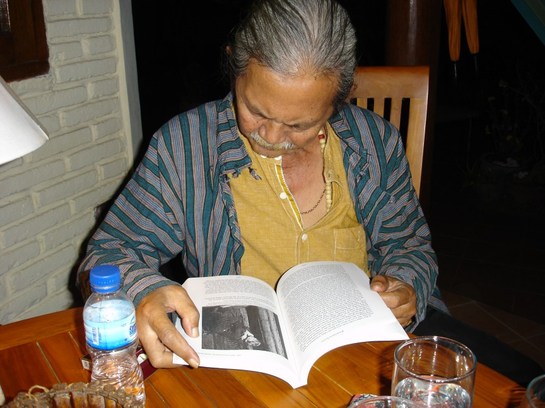
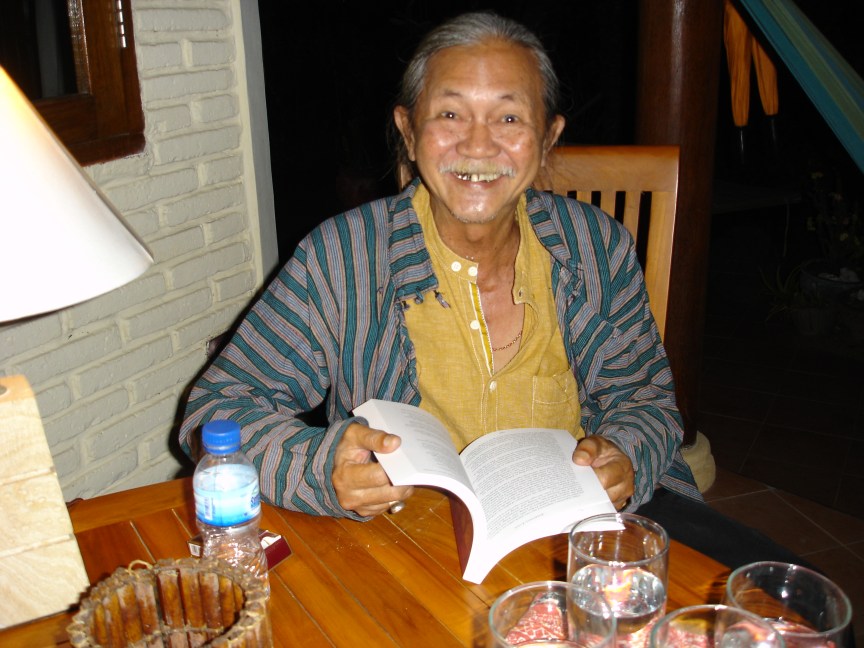
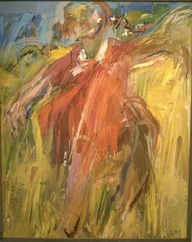
 RSS Feed
RSS Feed